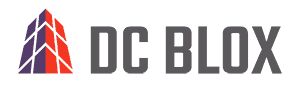
In a previous article we examined organizations’ need to evolve from Disaster Recovery (DR) and Business Continuity (BC) models to a strategy of IT Resilience. As discussed, while DR and BC solutions are inherently reactive responses to unplanned outages, IT Resilience is preventative and proactive, and designed and executed for businesses to be able to ride through an unplanned outage or adverse event.
Today, we’ll explore IT Resilience in more detail. We’ll also examine how DC BLOX leverages its colocation facilities, intelligent high-speed network, and Cloud Storage and Cloud Ramp Solutions to enable customers to maintain acceptable levels of service, regardless of what challenges may occur.
Geographically-Distributed Data Centers: The Cornerstone of IT Resilience
IT Resiliency and high availability go hand in hand. End users, including your customers, partners and staff care little about the resiliency of your systems — whether theoretical, tested or proven under fire. They are only concerned with the availability of their data, app, service or transaction. Can you answer in the affirmative that faced with an unplanned outage or adverse event, they will still work?
Traditionally, we conceive of Disaster Recovery and Business Continuity in the data center as founded on the use of redundant components, systems or subsystems. When one component or system fails or experiences an outage, the redundant element takes over seamlessly and continues to support computing services to the end-user base. The same concept extends to the physical facilities. For example, an organization may power its data center with two separate utility feeds from diverse substations so that a backup is available when the first utility feed fails. Additionally, a traditional approach to DR and BC incorporates protective measures such as fire detection and suppression systems, as well as redundant UPS, back-up generators and redundant chillers.
It’s important to recognize that not every data center is equal with respect to these fundamentals. As a Tier III data center operator, DC BLOX incorporates all of these protective elements at its facilities and more.
To achieve higher levels of resilience for mission critical computing platforms and systems, strategically-located, geographically-distributed colocation facilities in a region connected by a high-speed private network enables applications and data to be distributed or replicated across data centers with low-latency synchronization between them. This geo-dispersed data center approach means that in the event of an unplanned outage or system failure at one facility, applications or data will remain available at a site or multiple alternate sites within the footprint.
DC BLOX’s data centers are an example of IT Resilience founded on geographically-distributed colocation facilities. With more than 100 miles between data center locations, they meet an essential best practice that includes geographic diversity as a bulwark against potential natural or manmade disasters and unplanned outages. If something happens in one location, an organizations’ data and applications are secure in an alternate location. The key enabler is DC BLOX’s high-speed network whose performance allows the application to replicate great quantities of data over a large geographic area. We’ll discuss the importance of our resilient network in greater depth later.
While DC BLOX data centers are far enough from each other to avoid a common impact such as a power outage or tornado, they are also close enough that IT staff can easily travel to each location for equipment installation and updates. DC BLOX data centers can also support remote infrastructure from an enterprise-owned data center.
How Much IT Resilience, Where and Why?
After gathering data from a Business Impact Analysis (BIA), DC BLOX recommends that CIOs, COOs, and Chief Information Security Officers (CISOs) consider their organization’s business objectives and the criticality of an immediate or near-immediate resumption of operations in relation to the continued viability of their business. Financial institutions, healthcare organizations, and government public safety agencies engaged in time-sensitive computing activities are just a few of the types of entities that would experience even a few hours of downtime as completely unacceptable as compared to other environments.
For this reason, the IT Resilience strategies employed in a data center will vary with the importance of the respective workloads or application availability. Organizations with mission-critical workloads will utilize more resiliency techniques at greater levels within the data center because the cost of not preserving critical computing services is more expensive or debilitating than the fallout of an unplanned outage. Conversely, nonessential workloads that can tolerate some level of disruption may receive less resiliency or simply remain offline until they can be restored.
Essential business services such as transaction processing software or database systems may require more comprehensive data center and IT Resilience measures, including clustering, snapshots, virtualization and container movement.
The caveat in all of this is to carefully determine which systems, services and applications are mission-critical to business viability and which are less essential. At first glance, an organization may consider a business function as simple as email to be non-essential. However, if the staff of an eCommerce business or even a B2B firm was unable to communicate with its customers or partners for an extended period of time, the results could prove dire.
High-Speed Network Connectivity Is Essential to Resilience
Now that we’ve explored IT Resilience in the data center, let’s examine the importance of high-speed network connectivity linking an organization’s data centers. DC BLOX’s network is resilient itself, and its high-speed connectivity allows an application to replicate great quantities of data across facilities.
DC BLOX’s meshed fiber optic network infrastructure has the capacity to deliver 8.8 terabits per second (Tbps). This capacity provides customers at our data centers with fast, low-latency connectivity with geo-redundant paths. Providing carrier class network service, average latency between DC BLOX’s Atlanta data center and the ATL1 Internet Exchange at 56 Marietta Street is 0.103 milliseconds, while Atlanta to its Chattanooga facility is only 1.71 milliseconds.
Why is fast, low-latency connectivity so important to resilience? Because you need to continuously replicate or synchronize data in real-time across data center locations, so that in the face of an unplanned outage or service disruption at one data center site you can quickly access applications and data at the other facility in order to maintain operations.
From DC BLOX’s perspective, there are at least three components that comprise a resilient network.
- IT resilience at the network level requires adequate performance to ensure that there is enough capacity to avoid network bottlenecks. Optical transceivers of 100Gbit/s are now common in enterprise networks, driven by a combination of internet traffic, online commerce, streaming video, social networking and the increased use of cloud and SaaS platforms. DC BLOX uses multiple 100Gbit/s connections from its Atlanta and Chattanooga data centers to the facility at 56 Marietta Street. Our network is intelligent and capable of managing and orchestrating the large volumes of data that pass through our facilities every second.
- It’s also important to monitor WAN bandwidth consumption. A key component of DC BLOX’s approach to IT Resilience is that our software-defined network allows network routes to be established and modified as network traffic patterns require.
- Lastly, a resilient network requires redundancy. The DC BLOX wholly owned fiber network uses Ciena’s converged packet optical and packet networking products to provide fully protected and redundant routes with unprecedented scale and performance. In the event that one network route is compromised, traffic will automatically be rerouted over different network connections. Ciena’s 6500 and 8700 platforms add greater network automation, control and service delivery for customers in the Southeastern United States.
The Cloud and IT Resiliency
The cloud offers both a preventative and proactive means for riding through an unplanned outage or adverse event. Customers can access our Cloud Storage Solution to backup and archive data in any DC BLOX data center directly from their business premises or from a colocation space. Additional copies of the data can be replicated to another DC BLOX data center over our high-speed, private network for enhanced data protection through geographical diversity. Beyond reducing the cost and complexity of managing storage infrastructure, our Cloud Storage Solution eliminates the need to modify applications because we support standard file system interfaces. So, when a data storage component of a company’s IT infrastructure fails, backed-up data stored in DC BLOX’s Cloud Storage solution can be easily mounted to resume normal operation.
Many companies increase their IT resilience by leveraging public cloud providers to provide redundant on-demand compute or storage resources in the event that their primary systems become unavailable. They may even only use the cloud for certain critical components of their infrastructure. These hybrid IT environments require high-speed private network connections to ensure continuous communications during normal operations and disaster situations. DC BLOX’s Cloud Ramp facilitates hybrid IT environments where some infrastructure runs in a DC BLOX data center while connecting to additional compute or data storage resources in a public cloud provider.
Let’s Step Back and Look at the Big Picture
You’ve built redundancy into your servers and storage arrays. You’ve placed them in a DC BLOX data center that has redundant power, cooling and network connections. The data center itself can be redundant with another data center less than 100 miles away that contains replicated or synchronized data. And the high-speed network that facilitates data center-to-data center communications has built-in resilience through redundant connections and dynamic routing. This is a practical approach to increasing your company’s IT resilience!
By now, we trust it’s apparent that developing an IT Resilience strategy is neither a siloed nor one-size-fits-all exercise, but a holistic methodology integrating technology, sound decision-making, and a proactive and preventative mindset that prepares for the unexpected.
The stakes are high — the success and long-term viability of your business – and DC BLOX is here to assist you.
About DC BLOX
DC BLOX is a digital infrastructure provider in the Southeast that delivers integrated data center and fiber network solutions at scale to enable hyperscalers, enterprises, communications providers, and technology companies to offer enhanced digital services to their customers and accelerate the region’s economic growth. DC BLOX’s operating data centers are located in Birmingham, AL; Huntsville, AL; Chattanooga, TN; Greenville, SC; Myrtle Beach, SC, with new developments underway in Conyers, GA, Douglasville, GA, North Augusta, SC and Montgomery, AL. For more information, please visit www.dcblox.com, call +1.877.590.1684, and connect with DC BLOX on X, LinkedIn, Facebook, and Instagram.
Media Contact:
iMiller Public Relations for DC BLOX
Tel: +1.866.307.2510
Email: DCBLOX@imillerpr.com


